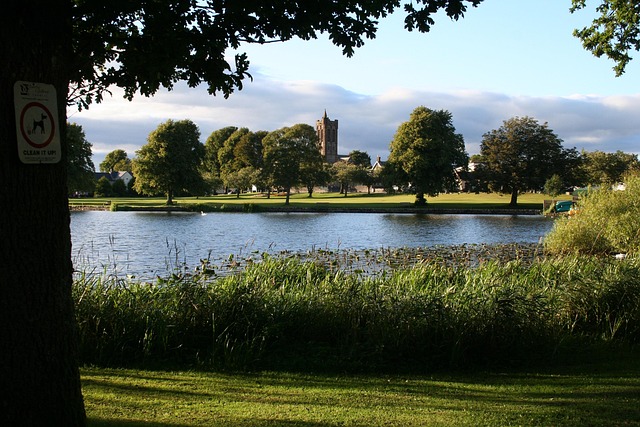The transformation of Native American territories into vast ranches was driven by European settlers' land demand, government policies like the Homestead Act (1862), and profit pursuit. These factors led to the commercialization of communal spaces once used for sustenance and traditional practices, evolving from small-scale operations into massive agricultural conglomerates. Trade routes historically connected remote grazing lands to bustling market centers, facilitating cultural intermingling and economic growth through livestock bartering for essential supplies and Real Estate. Market dynamics influenced breed diversity, pricing, and ranching practices, encouraging adaptation and diversification. Today, modern ranches merge tradition with innovation, leveraging advanced livestock management and sustainable practices while preserving heritage in today's digital agricultural landscape.
The rich history of ranching and trade intertwines with the development of vast expanses of real estate. Once native territories, these lands have evolved into commercial enterprises, reflecting a dynamic shift in land use. This article explores the transformation of ranch land, the impact of trade routes on the ranching economy, and the industry’s adaptation to modernization while preserving its storied legacy. Understanding this evolution provides insights into contemporary real estate practices and their historical roots.
The Evolution of Ranch Land: From Native Territories to Commercial Enterprises

The vast expanses of land that once served as Native American territories, teeming with rich biodiversity and cultural significance, underwent a dramatic transformation with the advent of ranching. As European settlers arrived, they brought with them not only new cultures but also an insatiable demand for land suitable for grazing cattle and sheep. This shift marked the beginning of a commercial enterprise that would forever alter the landscape and economy. What was once communal land used for sustenance and traditional practices became prime real estate for large-scale ranching operations, paving the way for vast ranches that stretched across states.
The evolution of ranch land from Native territories to commercial enterprises was facilitated by government policies and the pursuit of profit. The Homestead Act of 1862, for instance, encouraged settlement by offering 160 acres of public land to individuals who promised to cultivate it. This led to a surge in ranching activities as settlers sought to capitalize on the abundance of open range and favorable climate. Over time, these initial small-scale operations grew into massive agricultural conglomerates, with real estate becoming a driving force behind the expansion of ranching and trade networks across the West.
Trade Routes and Market Dynamics: Shaping the Ranching Economy

Trade routes have historically been vital in shaping the ranching economy, creating dynamic market dynamics that extend far beyond the ranch gates. These routes, often facilitated by natural geographical features like rivers and mountain passes, connected remote grazing lands to bustling market towns and cities. The exchange of goods was not merely a transaction; it fostered cultural intermingling and economic growth. Ranchers bartered their livestock for essential supplies, tools, and real estate in these vibrant trading hubs.
Market dynamics along these routes influenced everything from breed diversity and pricing to the development of specific ranching practices. The demand for certain cattle breeds, for instance, could vary widely depending on regional preferences and culinary traditions. This demand-supply equilibrium, constantly shifting with the winds of trade, encouraged ranchers to adapt, diversifying their herds and expanding into new markets.
Legacy and Modernization: Adapting to Change in the Ranching Industry

The ranching industry, steeped in tradition and heritage, has left an indelible mark on landscapes and communities worldwide. Over centuries, ranches have been more than just places to raise livestock; they are a testament to human perseverance, innovation, and cultural exchange. The legacy of ranching is woven into the very fabric of many regions, shaping their identities and economies. However, as we move through the digital age, this ancient practice faces modernization.
Adapting to changing times, ranches today embrace technology while preserving historical values. The real estate aspect has seen significant evolution with advancements in livestock management systems, precise farming techniques, and sustainable practices. These modernizations not only enhance efficiency but also ensure the industry’s longevity. By combining tradition with innovation, the ranching community continues to thrive, fostering a unique blend of old-world charm and cutting-edge solutions in today’s bustling agricultural landscape.






